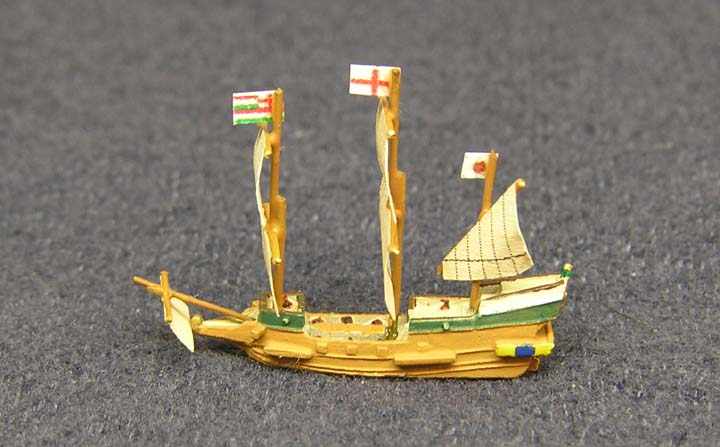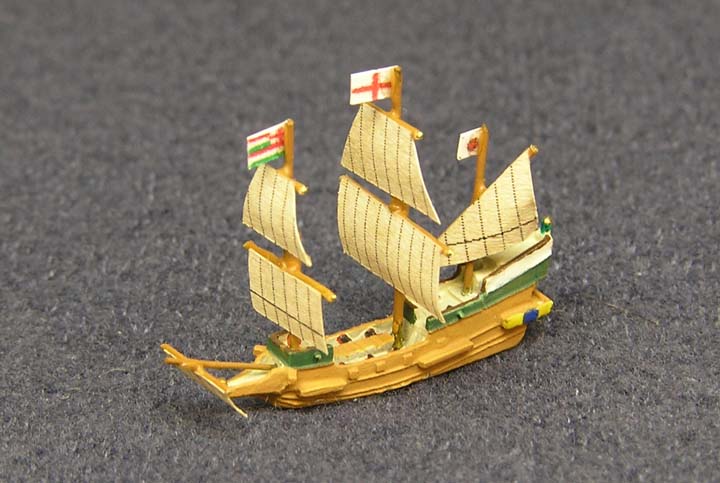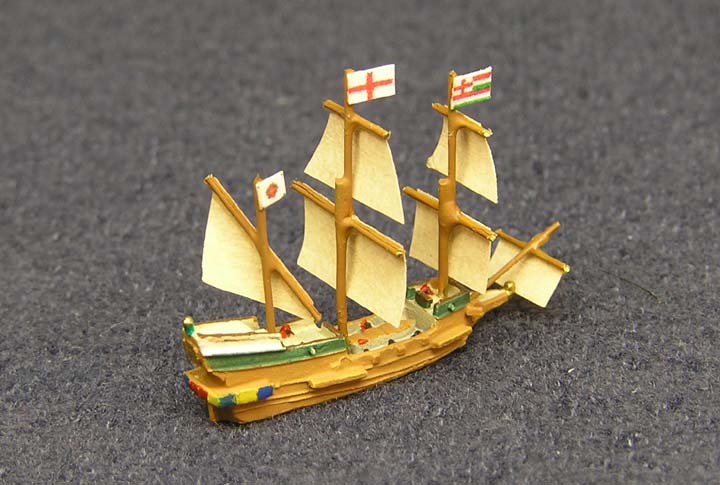Golden Hind

1576
(Johann Wolkersdorfer JW 27)
- Class: Galleon
- Displacement: 150 tons
- Dimensions: 88 x 20 x 10 ft.
- Armament: 18 cannon
- Complement: 80
- Built: Plymouth, England, 1576
- Service: The Pelican was the flagship of Francis Drake, the largest of a fleet of five vessels, the others being Elizabeth, Marigold, Swan, and Christopher. Drake's plan was to pass through the Strait of Magellan, explore the Pacific coast of South America, search for the Northwest Passage, and plunder Spanish shipping along the way. The expedition departed Plymouth 13 December 1577 and sailed first to Morocco and the Cape Verde Islands, capturing several Spanish ships and the Portuguese pilot Nuno da Silva. They reached Brazil in April, passed the River Plate, and reached Puerto San Julian in June. There an incipient mutiny was put down and several of the ships abandoned.
The Pelican, Elizabeth, and Marigold departed 17 August and entered the Strait of Magellan three days later, where Drake rechristened his ship Golden Hind, after the golden hind on the coat of arms of Sir Christopher Hatton, a principal backer of the voyage. After a smooth two week passage of the Strait, they entered the Pacific 6 September 1578, but then ran into a severe storm that caused the loss of Marigold while the Elizabeth turned back for England. However Drake established that there was open water to the south of the continent, now known as Drake Passage.
Sailing north along the coast, they looted the small port of Valparaiso on 5 December, and on to Arica and Callao, chasing and capturing a Spanish treasure ship, the Nuestra Senora de la Concepcion, that was carrying gold and 26 tons of silver from the Potosi mines to Panama for cartage across the isthmus. Drake continued to raid along the coast and drew careful charts as he moved north in search of the western end of the fabled Northwest Passage. He turned back just short of the Strait of Juan de Fuca and dropped anchor near Point Reyes, California, on 17 June for a month of repairs and recuperation.
Drake and crew departed 25 July and sailed west across the Pacific, reaching the Philippines in October and then the Moluccas, where they refit and loaded spices. Departing 12 December they had a difficult time navigating Indonesian waters and grounded on a reef for a day. They watered on the south coast of Java and then sailed nonstop around the Cape of Good Hope to Sierra Leone in July. The Golden Hind arrived in Plymouth on 26 September 1580, completing the first English circumnavigation of the globe. On 4 April 1581, Queen Elizabeth visited the Golden Hind at Deptford and knighted Drake on board. The queen also ordered the ship displayed in drydock, where it remained on view into the 1660s.


 Up
Up




 Up
Up